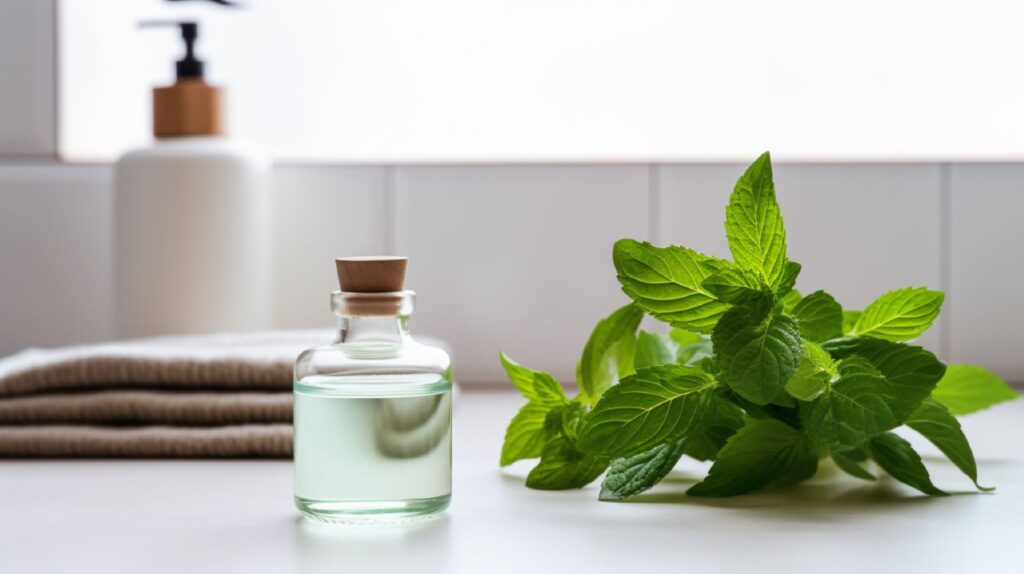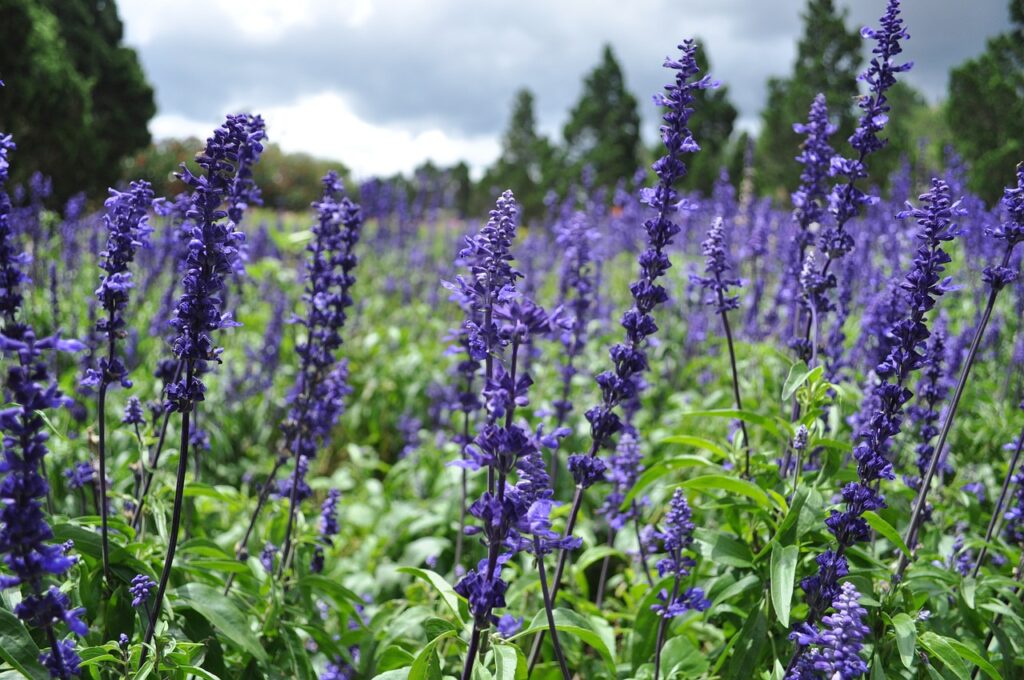Homemade Peppermint Shampoo: Simple Recipe for Healthy Hair
Peppermint is a popular ingredient in many hair care products, thanks to its refreshing scent and many benefits for the hair and scalp. Homemade peppermint shampoo is a great way to harness these benefits while avoiding the harsh chemicals found in many commercial shampoos.
Whether you’d like to create a DIY shampoo that awakens your senses or soothes an itchy scalp, peppermint essential oil is a fantastic ingredient for hair care. With a little effort and a few simple, inexpensive ingredients, you can create a natural, effective shampoo tailored to your hair type.
Understanding Homemade Shampoo
Homemade shampoo has become increasingly popular in recent years, with many people looking for natural and organic alternatives to traditional store-bought shampoos. DIY shampoo recipes can be made with various natural ingredients, including peppermint, which has a refreshing and invigorating scent.
When making homemade shampoo, it’s important to remember that natural ingredients may not lather as much as traditional shampoos.
- Commercial shampoos often contain artificial foaming agents that create lots of bubbles and suds.
- This does not mean that natural shampoos are not effective at cleaning your hair. In fact, many people find that homemade shampoos leave their hair feeling even more clean and refreshed without stripping away natural oils.
Comparing Homemade and Commercial Shampoos: Continued
While commercial shampoos are convenient and widely available, they may contain harmful chemicals that can damage hair and skin. On the other hand, homemade shampoos can be made with natural ingredients and are often gentler on hair and skin.
Commercial Shampoos
Commercial shampoos are widely available and come in various formulas for different hair types.
- Many commercial shampoos contain toxic chemicals such as sulfates, parabens, and synthetic fragrances that can strip hair of its natural oils and cause irritation or allergic reactions.
- In addition, some commercial shampoos may even contain microplastics that can harm the environment.
Homemade Shampoos
Homemade shampoos can be made using natural ingredients such as essential oils, apple cider vinegar, and baking soda. These ingredients can help to cleanse and nourish hair without the use of harsh chemicals.
- Homemade shampoos can be customized to suit individual hair types and preferences.
- While homemade shampoos may not lather as much as commercial shampoos, they can still effectively clean hair and leave it feeling soft and healthy.
- Homemade shampoos are often more environmentally friendly than commercial shampoos, as they do not contain harmful chemicals or microplastics.
- One of the main benefits of homemade shampoo is controlling the ingredients that go into your hair care products. By making your own shampoo, you can choose precisely the natural and organic ingredients that are gentle and nourishing for your hair.
By using natural ingredients and avoiding harsh chemicals, you can create a gentle and effective shampoo that is better for both your hair and the environment.
Ingredients for Homemade Peppermint Shampoo
Making your own peppermint shampoo is a great way to ensure that you are using natural, safe ingredients in your hair, as already mentioned. Additionally, by creating your own DIY shampoo, you’re able to tailor fragrances and other many other properties to your exact preferences.
Your creation tailored precisely according to your preferences.
Here are some of the key ingredients you will need to make your own homemade peppermint shampoo:
Essential Oils
- Peppermint essential oil is the star of this shampoo, providing a refreshing and invigorating scent. The menthol contained in it works to soothe the scalp and reduce dandruff. Peppermint oil is also known to promote hair growth and improve hair texture.
- Other essential oils that can be added to the shampoo include rosemary essential oil, chamomile essential oil, lavender essential oil, jasmine essential oil, palmarosa essential oil, and tea tree essential oil. Each of these oils has its unique benefits for hair and scalp health.
Base Ingredients
The base ingredients of this shampoo include castile soap, olive oil, and coconut milk. Castile soap is a gentle and natural soap that is perfect for use on hair. Olive oil helps to moisturize and nourish hair, while coconut milk provides a creamy and luxurious texture.
Additional Ingredients
Other ingredients that can be added to the shampoo include aloe vera, glycerin, and jojoba oil. Aloe vera is a natural conditioner that can help soothe and nourish hair, while glycerin helps lock in moisture. Jojoba oil is a lightweight oil that is easily absorbed by hair and can help to strengthen and protect it.
Optional Ingredients
Depending on your hair type and needs, many other optional ingredients can be added to the shampoo. These ingredients include apple cider vinegar, honey (manuka is best), green tea, baking soda, almond oil, and more. Experiment with different combinations to find the perfect recipe for your hair.
Making your homemade peppermint shampoo is a great way to ensure you use safe and natural ingredients in your hair routine. With a few simple ingredients, you can create a shampoo tailored to your specific hair type and needs.
Peppermint Essential Oil Moisturizing Shampoo: DIY Recipe
Making homemade peppermint shampoo is a simple and cost-effective way to get a refreshing and invigorating hair wash. Check out the easy DIY recipe below. This shampoo uses peppermint essential oil paired with moisturizing and lathering ingredients to leave your scalp moisturized and your hair feeling refreshed, clean, and soft.
Ingredients
- 1/2 cup castile soap
- 1/4 cup coconut oil or olive oil
- 1/4 cup aloe vera gel
- 1/4 cup distilled water
- 2 tbsp vegetable glycerin
- 20 drops peppermint essential oil
Instructions
- Melt the coconut or olive oil if solid.
- Gently mix the castile soap, oils, aloe vera gel, glycerin, and water with a whisk until smooth and creamy.
- Add the peppermint essential oil and mix until well combined.
- Transfer to a bottle and seal. Foaming bottles or flip-cap bottles work well.
- Apply to wet hair, massage, and lather.
- Rinse thoroughly.
- Apply a natural hair conditioner.
Additional Tips and Recommendations
- The coconut/olive oil, aloe vera, and vegetable glycerin add moisture while still allowing for a nice lather.
- You can adjust the oils and other ingredients to suit your hair and scent preferences.
- We always prefer adding a few drops of jasmine or lavender essential oil for a floral note, which smells terrific with the peppermint EO.
- If you want a spicier fragrance note, add a few drops of rosemary EO, which has also been demonstrated to promote hair growth in recent studies.
Again, this is a fantastic shampoo alternative to store-bought shampoos and can be customized to suit your hair’s needs.
Benefits of Homemade Peppermint Shampoo: Summarized
Here’s a quick summary of many of the benefits of this wonderful homemade shampoo.
| Benefit | Details |
|---|---|
| Scalp Health | Peppermint oil promotes a healthy scalp by reducing itching and irritation with its cooling, soothing menthol. It also has antiseptic properties. |
| Hair Health | Peppermint oil stimulates hair growth by increasing blood flow to the scalp. It nourishes and strengthens hair to prevent breakage and hair loss. |
| Hydration | Homemade shampoo allows you to use simple, natural ingredients like castile soap, oils, aloe vera, and essential oils without harsh chemicals. |
| Fresh Scent | The minty scent of peppermint oil leaves hair smelling clean and refreshed. |
| Natural Ingredients | Making your own shampoo is cheaper than buying products from the store while still providing high-quality hair care. |
| Customizable | You can adjust the ingredients and amount of essential oils based on your hair and scent preferences. |
| Cost-Effective | Making your own shampoo is cheaper than buying products from the store while still providing high-quality hair care. |
Safety Measures and Considerations
When making homemade peppermint shampoo, it is important to take certain safety measures and considerations to ensure that the final product is safe to use. Here are some things to keep in mind:
Patch Test
Before using the shampoo or any natural beauty product, it is recommended to perform a patch test to ensure that you are not allergic to any of the ingredients.
Vegan
If you are vegan, you may want to use vegan-friendly ingredients when making the shampoo. This means avoiding ingredients such as honey, milk, egg, and opting for plant-based alternatives instead.
Essential Oils
Peppermint essential oil is a key ingredient in this shampoo, but it should be used with caution, as with any essential oil. Essential oils are highly concentrated and can cause skin irritation if not diluted properly. Be sure to follow the recipe and use the recommended amount of peppermint oil. Never apply any essential oil directly onto the skin without properly diluting it first.
Storage
Store the shampoo in a cool, dry place away from direct sunlight. This will help preserve the ingredients’ quality and prevent the shampoo from spoiling. Again, foaming soap bottles or flip-up bottles work great for storage and easy usage.
By following these safety measures and considerations, you can create a safe and effective homemade peppermint shampoo that is suitable for your hair type.
Alternatives to Liquid Shampoo
For those who want to avoid liquid shampoos, a few alternatives are available.
Soap Bars: One popular option is shampoo bars, solid bars of soap specifically formulated for hair. These bars are often made with natural ingredients and can be a great option for sensitive skin users.
Dry Shampoo: Another alternative is dry shampoo, a powder that can be sprinkled onto the hair and brushed out. This can be a great option for those who want to extend the time between washes or who don’t have access to water.
Baking Soda and Apple Cider Vinegar: Some people also use baking soda or apple cider vinegar as a natural alternative to liquid shampoo. Baking soda can be mixed with water to create a paste, which is then applied to the hair and rinsed. Apple cider vinegar can be diluted with water and used as a rinse after washing the hair.
It’s important to note that not all alternatives will work for everyone, and it may take some trial and error to find the right option. It’s also important to research and choose safe and effective solutions for hair care.
Homemade Peppermint Shampoo FAQs
How can I make my own herbal shampoo at home?
There are many different recipes for making herbal shampoo at home, but most involve steeping herbs in hot water to create an infused liquid. This liquid can then be mixed with a gentle shampoo base to create a custom shampoo that is tailored to your specific hair type and needs. In the above post, we’ve implemented essential oils instead.
What are the benefits of using essential oils in shampoo?
Essential oils can provide various benefits when used in shampoo, including adding fragrance, promoting hair growth, and soothing an itchy scalp. However, it is important to use essential oils in moderation and to dilute them properly to avoid irritation.
Is it possible to make hypoallergenic shampoo at home?
Yes, it is possible to make hypoallergenic shampoo at home by using gentle, non-irritating ingredients and avoiding common allergens such as fragrances and harsh detergents. Some popular hypoallergenic ingredients include aloe vera, chamomile, and oatmeal.
What are some recipes for homemade coconut milk shampoo?
Popular recipes for homemade coconut milk shampoo may oftentimes include mixing coconut milk with liquid castile soap, honey (optional), and essential oils. Other recipes may involve mixing coconut milk with aloe vera gel and essential oils for a soothing, moisturizing shampoo. Below, see the two simple recipes for more info.
Basic Coconut Milk Shampoo
- 1/2 cup coconut milk
- 1/2 cup liquid castile soap
- 10 drops essential oil (optional)
Hydrating Coconut Shampoo
- 1/3 cup coconut milk
- 1/3 cup aloe vera gel
- 1/3 cup liquid castile soap
Yes, peppermint oil can be added to shampoo for a refreshing scent and to provide a cooling sensation on the scalp. However, it is important to use peppermint oil in moderation and to avoid getting it in your eyes.
How much peppermint oil should I use when making homemade shampoo?
Using no more than 1-2% peppermint oil in homemade shampoo is recommended to avoid irritation. This means using approximately 4-8 drops of peppermint oil per ounce of shampoo base.


